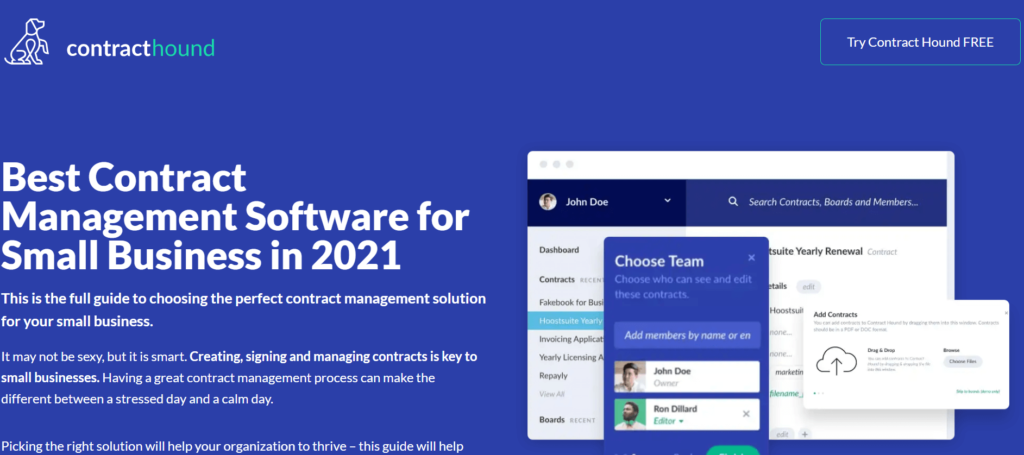You already know that your marketing budget depends on your sales.
But knowing how to allocate and modify your budget according to your sales performance? Now that’s a challenge.
Who better to ask than the senior marketers of five successful startups? Here’s what they had to say in response when we posed them the question: “How much should I spend on marketing?”
Let’s dive in.
“How Much Should I Spend on Marketing?”: An Insider’s Look at 5 Startups’ Marketing Budgets (And What They Spend It On)
1. Breadcrumbs: Allocate 10% of Your Maximum Budget
Breadcrumbs co-founder and CPO, Massimo Chieruzzi, tells it to us straight:
“There’s no magic number.
Understand how much budget you can afford to allocate.
Start testing various marketing channels by spending 10% of the max budget. Every month or quarter, double down on the channels that work and stop those that don’t.
Start testing new ones.”
As you experiment with the marketing channels, understand your return on investment (ROI), customer lifetime value (LTV), and payback period. Here are several questions you might want to ask yourself:
- “How much is a conversion?”
- “What’s the average order value?”
- “How many leads do I need every month or campaign?”
- “If I spend $500 to acquire a customer, how long should they subscribe before I earn back $500?
“Scale as much as possible with your cash flow,” reminds Massimo.
“Keep in mind that scaling the budget on many channels results in a reduction of the conversion rate and ROI, so continue monitoring your channels constantly and making adjustments.”
Pro Tip: If you want to gain a better understanding of your campaign ROI, start implementing revenue marketing.

By aligning all revenue-centric departments, you’ll see which specific marketing strategies perform the best and allocate your budget accordingly. With a higher ROI, marketers can increase their budget to scale operations.
Recap #1. How Much Should I Spend on Marketing?:
Allocate 10% of your maximum budget every month or quarter. Double down your best-performing channels. And while you’re at it, consider your ROI, LTV, and payback period when adjusting your budget.
2. Contract Hound: Consider Churn, Profitability, and More
Nicholas Holmes runs Contract Hound and describes himself as a performance marketer.
He shares with Breadcrumbs, “We don’t do branding at the moment. This may change as we get bigger, but for smaller businesses, I’d argue it’s the most cost-effective way to grow.”

“We’ll scale back budgets or switch off certain channels if we know that we can’t provide a decent sales experience until the pipeline progresses a bit,” concludes Nicholas.
One of the main marketing channels that the SaaS startup invests in is Google Ads; it bids brand, competitor, and generic keywords in several countries. In Contract Hound’s case, it’s contract management software.
Here’s the thinking behind Nicholas’ process:
“As a simplified scenario, we might know that 1 in 3 customers who search a brand name in the space will eventually choose Contract Hound. So we can pay approximately 33% of their first month if we want to break even on our ad spend that month. Whereas we might say that only 1 in 10 who came in using a more generic term like ‘contract management software for small business’ will convert. So we can pay only 10% of their first month and break even. In reality, we use a longer payback period to make these decisions, but the principle’s the same. So to close the loop, in theory, if I know I have a target of 10 new customers for the month, I know I'll need to bring in somewhere between 30-100 leads from my ad campaign. I'll budget accordingly. If we can handle more, I'll let the campaign run with bigger budgets as long as what we're paying for each lead isn't increasing.”
Based on what Nicholas has shared so far, if we assume that your marketing channel delivers a CPL of $300 and you know that 1 in 10 users will convert, you’re paying $3,000 for a customer.
Moving forward, you need to ask yourself how many months of “serving” that customer will earn you back that $3,000; and the total profitability of the customer you just acquired. Don’t forget about churn!
Recap #2. How Much Should I Spend on Marketing?: Think about the big picture. Consider customer churn and total profitability of the customer you’ve acquired when tweaking your marketing budget.
3. TeamBuilding: Prioritize Stress-Free Lean Marketing
Typically, bootstrapped businesses don’t have the luxury of large marketing budgets—these companies need to take a lean approach to marketing.
That’s the exact case of TeamBuilding. CEO Michael Alexis reveals that he doesn’t have a marketing department even though he has 100+ employees under his wings. He does, however, work with an in-house content writer and several freelancers.

Michael advocates lean marketing as it encourages him to focus on high-leverage activities.
“I prefer evergreen marketing. For example, consistently writing and publishing high-quality blog posts is a marketing investment that can yield results for months or even years.”
Michael Alexis, CEO of TeamBuilding

He continues, “We avoid marketing channels like social media, which can be a significant time sink where even viral results don’t lead to meaningful increases in sales.”
Besides blog posts, TeamBuilding also invests in lead generation. Michael and his team allocate $10,000 for Google Ads every month.
“This amount is around the maximum for our most relevant targeted keywords,” shares the CEO. “Since this ad spend supplements our other efforts, we’re more likely to cut it to $0 then adjust it up or down in any given month.”
Using this approach, you’re investing in marketing that’s on a CPL basis. Your expenses should remain in a reasonably stable proportion to your sales.
Michael adds, “In a way, this format creates a flexible and manageable budget that’s also stress-free since you’re unlikely to overspend it.”
Recap #3. How Much Should I Spend on Marketing?: Avoid time-sink channels (e.g., viral Instagram posts that drive traffic but zero sales). You want to focus on evergreen marketing strategies that drive meaningful sales.
4. PickYourSkills: Play Around Your Budget To Hit Your Metrics
Marilyne Dupuy, the head of marketing at PickYourSkills, first sets her marketing budget by quarter and then shifts it “more precisely by month.”
“As our company’s growing fast, we need to anticipate how much every department is going to spend over the next few months. But for that same reason, it’s difficult for us to set a budget by year. Too many things can happen in a year when you work in a startup!”
Marilyne Dupuy, head of marketing at PickYourSkills
Currently, PickYourSkills spends the most on digital marketing, including software tools, acquisition, ads, growth, and content. “We also have a budget set for outsourcing work, like hiring PR agencies or freelancers. And less often, we spend time on events, both online and offline.”

PickYourSkills regularly revises its budget, whether it’s the amount of money or the channel it wants to spend on. Sometimes Marilyne transfers the budget from awareness to acquisition. Other times, it’s the other way around.
“My job as head of marketing is to generate demos for our solution,” adds Marilyne. “The main metric I follow is how much it costs us to get one demo. All the adjustments are made to respect our average ‘demo price’ while building a strong brand.”
Recap #4. How Much Should I Spend on Marketing?: Set your budget by quarter. As you start seeing specific results, adjust it by month. Take your money-making metrics into consideration (e.g., how much it costs to get a trial to sign up or demo request).
5. Fellow.app: Do More of What Works
Every month at Fellow.app, the CEO and marketing team gather in a meeting to analyze which specific marketing channels perform the best and decide whether they should increase or decrease it.
At the moment, the startup is investing in paid search, paid social, and content marketing. Manuela Bárcenas, the marketing manager at Fellow.app, summarizes their approach in a sentence, “The reasoning behind increasing our marketing budget is ‘Do more of what works.’”

Schedule frequent check-ins to understand how your different acquisition channels are performing. From there, you can decide if you want to continue spending, reduce the budget, or increase if the channel could potentially scale.
Recap #5. How Much Should I Spend on Marketing?: Check in with your marketing team to assess the results of your marketing performance. Get everyone on the same page if you want to continue investing or reduce the budget.
Wrapping Up: “How Much Should I Spend on Marketing?”
Every startup is different, and each boasts different strategies.
But as you can see from this “How Much Should I Spend On Marketing” guide, there’s an underlying theme here—and that is to always experiment with other customer acquisition channels and focus “more on what works.”
Maybe you want to take a leaf out of Massimo’s book, to allocate 10% of your maximum budget every month or quarter.
Or maybe, you want to set your budget by quarter and then by month like Marilyne.
Whichever strategy you choose to focus on, be ruthless. Doubling down on your best-performing channels and ditch those that perform poorly.
Before you know it, you’re on your way to maximize your marketing budget, hit your money-making metrics in your SaaS marketing strategy, and accelerate revenue over the long haul.



